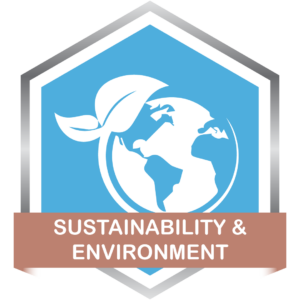About Course
Construction Environmental Management Plan – CEMP 
The Construction Environmental Management Plan (CEMP) is a unique effort to provide awareness about environmental issues from the construction, sustainability, infrastructure development, and construction environment management perspectives. When learners finish the course, they should have a thorough understanding of the problem areas.
A Construction Environmental Management Plan (CEMP) has the objective to provide a framework for meeting all environmental obligations and avoiding negative impacts during construction.
The CEMP should address all significant impacts that can occur during the construction phase and encompass every aspect of environmental management.
CEMP encompasses the overall strategy to manage all project-related environmental issues on-site, as well as a manual for use by management and construction personnel.
Our support includes developing and maintaining integrated and discipline-specific programmes for environmental, health, and safety compliance that add value to businesses. We also help our clients secure and maintain the necessary environmental permits to comply and operate with complex regulatory requirements.
Beyond Smart Cities is the world’s first marketplace for green technology. It connects millions of sustainability experts, green building experts, energy experts, commissioning experts, health and safety experts, fire safety experts, climate change experts, and green product and technology manufacturers with independent talent from all over the world.
Krishnaji Pawar, the CEO and founder of Beyond Smart Cities, is in charge of creating the Construction Environmental Management Plan – CEMP training course.
The following are some insights into the course content:
- Introduction to the Construction Environmental Management Plan
- Learn more about the legal, policy, and administrative framework.
- Identify project-specific environmental conditions.
- Learn about feasibility studies and economic assessments in LEED projects.
- Analysis of Potential Environmental Impacts
- Develop the construction environmental management plan.
- Develop a self-contained environmental management plan (resources will be added).
- CEMP Presentation Template for Qatar: Ministry of Municipality and Environment (MME)
Why is CEMP needed?
- Set environmental construction targets;
- List local and worldwide construction environmental rules.
- Detect construction-related environmental impacts like chemical and hazardous waste, dust, exhaust gases, and noise;
- To ensure environmental compliance, use site preparation and clearing, control installations, and waste reduction techniques to avoid or minimise impacts on air, water, soil, and groundwater quality.
- Establish emergency procedures, including an emergency control and action plan, relevant remedial measures, suitable equipment, and a training programme for staff to handle site-specific emergencies;
- Protect the building site’s workers’ health and safety;
- Specify what the project proponent, main contractor, subcontractors, and others must do to meet environmental standards during construction;
- Suggest hiring a full-time senior supervisor on site to ensure CEMP compliance and speedy resolution of all construction difficulties;
- Establish a structured reporting system with standard forms for environmental compliance communication, documentation, and review;
- Establish a monitoring and inspection programme to ensure compliance with standards and regulations.
Why are Environmental Management Services so important?
We believe environmental assets must be protected due to the increasing depletion of natural resources. Long-term profitability depends on environmental concerns. Understanding environmental effect and how to decrease it will help you prepare for risks, asset devaluations, and cost reduction.
Building permits require environmental management systems. Your project needs a top-notch environmental services partner to ensure quality.
Years of experience and hundreds of successful projects inform our environmental impact studies. Construction Environmental Management Plans (CEMP), marine, asbestos cleanup, air, water, and soil quality testing, and acoustics services are among them.
Environmental science and sustainability classes balance human demands with environmental health. Conservation, environmental policy, agriculture, sustainability, pollution, and climate change.
The course raises environmental consciousness through social sciences, technology, education, and law. After the course, students should comprehend the issues.
Plans for environmental management in construction are the instrument that is utilized to make certain that environmental obligations are kept. For instance, pledges made by means of environmental statements (ES), environmental plans, programs, or laws, as well as planning conditions
CEMPs serve as a management framework that allows for the planning and execution of construction operations in a manner that is consistent with these commitments.
Environmental management systems (EMS), method statements, mitigation, monitoring, environmental training sessions, incident reporting, and incident management are all ways to accomplish this goal. It outlines the tasks that the applicant and the stakeholders have to fulfill in order to effectively meet these requirements.
Course Content
Section 1: Introduction and Course Outline
-
11:19
-
L1.Introduction and Course Outline Handout
Section 2: Construction Methodology
Section 3: Environmental Baseline
Section 4: Environmental Management Plan
Section 5: Environmental Impacts and Mitigation
Section 6: Monitoring and Auditing
Section 7: Emergency and Incident Response Plan
Section 8: CEMP – Presentation for MME or Authority
Section 9: Summary and Resources
Student Ratings & Reviews


